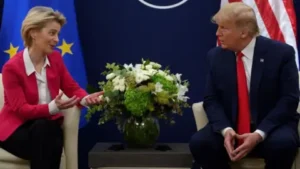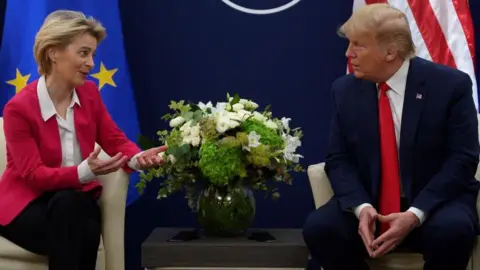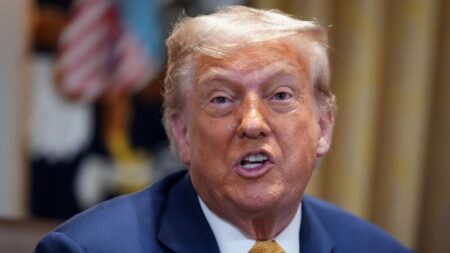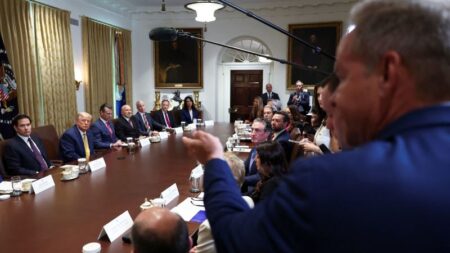In a significant development concerning international trade relations, the European Union (EU) has expressed its optimism about reaching a tariff agreement with the United States in the “coming days.” This agreement aims to avert import taxes that U.S. President Donald Trump has threatened to impose on EU goods, which could substantially impact trade between these pivotal economies. With tariffs originally scheduled to come into effect on July 9, the U.S. administration has extended discussions about these tariffs until August 1, creating a window for negotiations.
A successful deal would signify a critical advancement in the often-tense relations between the U.S. and the EU, with the latter being America’s largest trading partner. Analysts note that these negotiations carry significant weight, not only for economic reasons but also in terms of geopolitical relationships, as both parties navigate the complexities of international trade policies. Giancarlo Giorgetti, Italy’s Economy Minister, underscored the challenges at hand, describing the discussions as “very complicated” and indicating that they may extend to just before the deadline.
Simultaneously, other trading partners of the United States remain on high alert for further tariff announcements from Trump, who has indicated his intent to move forward with tariff plans that initially emerged in April. After creating turmoil in the financial markets when proposed tariffs were first introduced, Trump rescinded some of the most extreme tax rates but retained a 10% tariff on numerous imports. Recently, he issued letters to fourteen countries, including allies like Japan and South Korea, announcing the potential for tariffs between 25% and 40% on their exports starting on August 1. This dramatic move could profoundly affect global trade dynamics, should Trump proceed.
The White House had earlier recommended tariffs of 20% on EU goods, with threats to escalate that figure to an eye-watering 50%. These potential tariffs pose substantial risks to the U.S. economy, given the vital nature of trade with the EU. Moreover, the European Union has publicly asserted its readiness to retaliate if necessary. However, Olof Gill, a spokesperson for the EU, mentioned in a press conference that reaching an agreement was in sight. He conveyed confidence that negotiations might conclude favorably before the August deadline.
President Trump, who has been vocal in his criticisms of the EU, offered praise for the bloc in recent remarks. He mentioned that the White House is “probably two days off” from finalizing a new tariff rate for the EU. Alongside him, Commerce Secretary Howard Lutnick commended the EU for making “significant, real offers” that could facilitate improved access for U.S. farmers to European markets, indicating movement towards a more favorable trading environment.
In parallel to these negotiations, Trump has threatened to impose additional tariffs on various crucial items, including pharmaceuticals, with a pronounced announcement of a 50% tariff on copper entering the United States. Despite these tumultuous tariff discussions, the response in European markets has been surprisingly resilient, with early trading showing positive momentum while both the U.K. and U.S. stock markets opened relatively stable. Analyst Dan Coatsworth remarked on the unexpected calm in the market, suggesting that investors seem to be “shrugging it off,” which may reflect a broader skepticism about Trump’s negotiating credibility.
Indeed, many market participants have shifted from a state of acute anxiety, prompted by earlier announcements of sweeping tariffs, into a more reflective “wait and see” mindset. Analysts have coined the term ‘TACO’ — “Trump always chickens out” — to describe the perception that Trump’s threats may lack follow-through, signaling that the markets might be recalibrating their expectations of U.S. tariff policies.
As this situation unfolds, the implications for international trade and economic stability are vast, and stakeholders across various sectors are keenly monitoring the developments between the EU and the U.S. It remains to be seen whether an agreement will be struck within the proposed timeframe, but the willingness on both sides for negotiation signals potential for a positive outcome in an otherwise fraught landscape of global trade.










